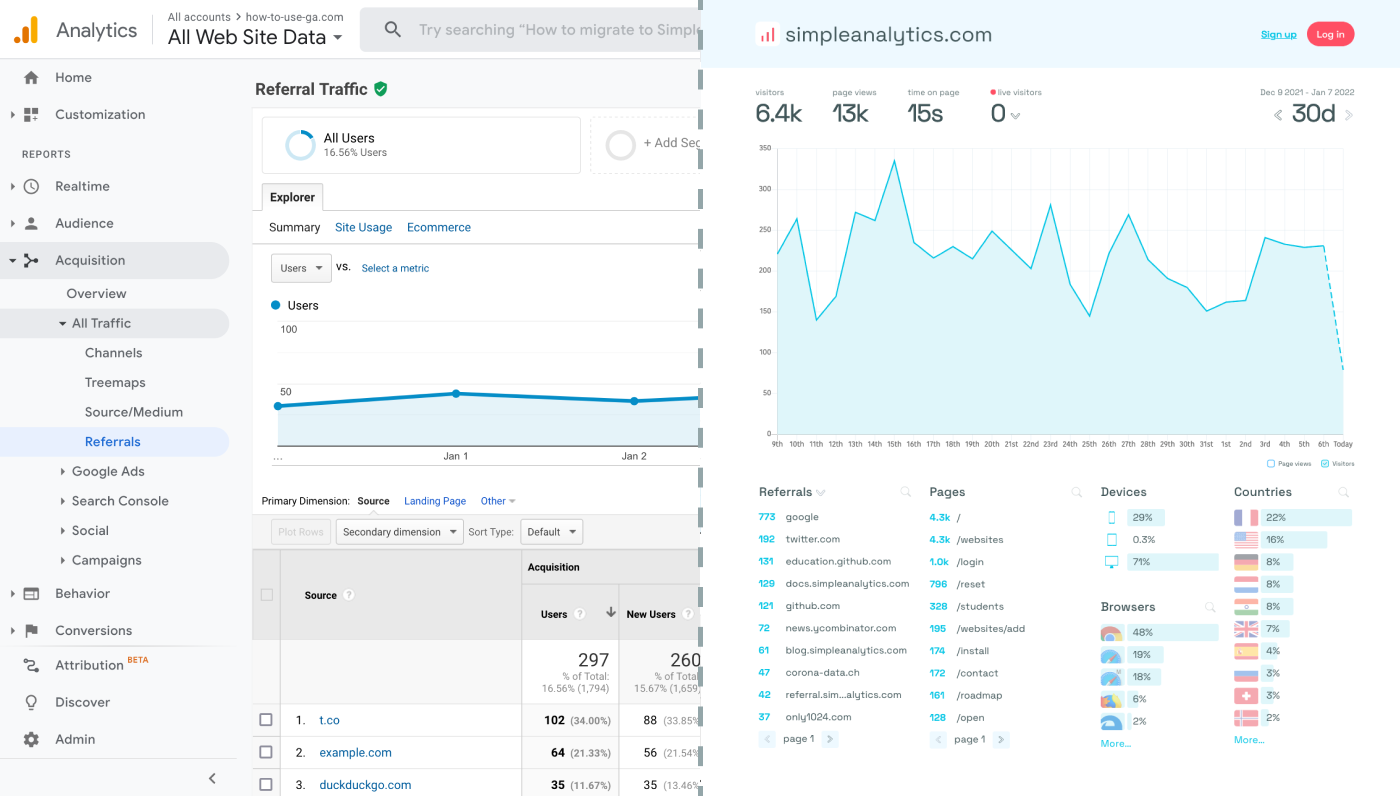Adding Google Analytics to your WooCommerce store can provide you with insights into your sales funnel, customer journey, and much more. Here is how to do it, step by step.
Let's dive in!
Before we dig in I want to show you something. I promise it's worth it...
Google Analytics is great, but also complex and a bit clunky. If you just want a straightforward dashboard with the insights you need, GA is not a great place to start. Additionally, Google doesn't care about privacy and GA requires an annoying cookie banner.
That's why I built Simple Analytics, a privacy-friendly and simple analytics tool - no personal data, no cookies, just the insights you need in a straightforward dashboard.
Here is how it looks vs GA. Feel free to check our live analytics to get an idea for your project. (It is free btw)
All right, enough about us. Now let's get into answering your question!

Integrating Google Analytics
Set up Google Analytics
- Log into your GA profile (or create one, if you haven't already)
- Create a GA property for your website
- Inspect the property and note down your Measurement ID. You will need it later.
Adding Google Analytics
Install a WooCommerce Analytics Plugin
The easiest way to integrate Google Analytics with WooCommerce is through a plugin. There are several plugins available, like 'Enhanced Ecommerce Google Analytics Plugin for WooCommerce' or 'MonsterInsights', which offer easy integration.
Configure the Plugin
After installing your chosen plugin, configure it by entering your GA4 Measurement ID. The plugin settings should guide you through this process, enabling enhanced ecommerce tracking features specific to WooCommerce.
Enable Enhanced Ecommerce Features
Ensure that enhanced ecommerce tracking is enabled in your plugin settings. This feature provides detailed insights into user interactions with your products, such as views, add-to-cart actions, and purchases.
Verify Your Setup
Test the integration by performing actions on your WooCommerce store like viewing products or completing a purchase. Then, check your Google Analytics account to see if these actions are recorded. Real-time reporting in GA4 can be helpful for this verification.
(Optional) Create New Properties
To track multiple stores, create more GA properties and use the corresponding Measurement IDs. This prevents GA from conflating the data.
Final Thoughts
Adding Google Analytics to WooCommerce can give you great insights. However, ask yourself: is Google Analytics the right tool for you?
GA is an overpowered solution for straightforward analytics. If you're looking for a simple and intuitive dashboard with the insights you need, there are better alternatives. Yes, I’m talking about my own product (Simple Analytics), but there are others out there as well.
I hated using Google Analytics for my projects. It's clunky, there are hundreds of dashboards and it doesn't look appealing. Also Google doesn't care about privacy or ethics. That's why I decided to build my own and more intuitive web analytics tool.
If this resonates with you, feel free to give Simple Analytics a spin. You just need to add the script and off you go. This takes about one minute- and there is a free version as well!
Enjoy!
